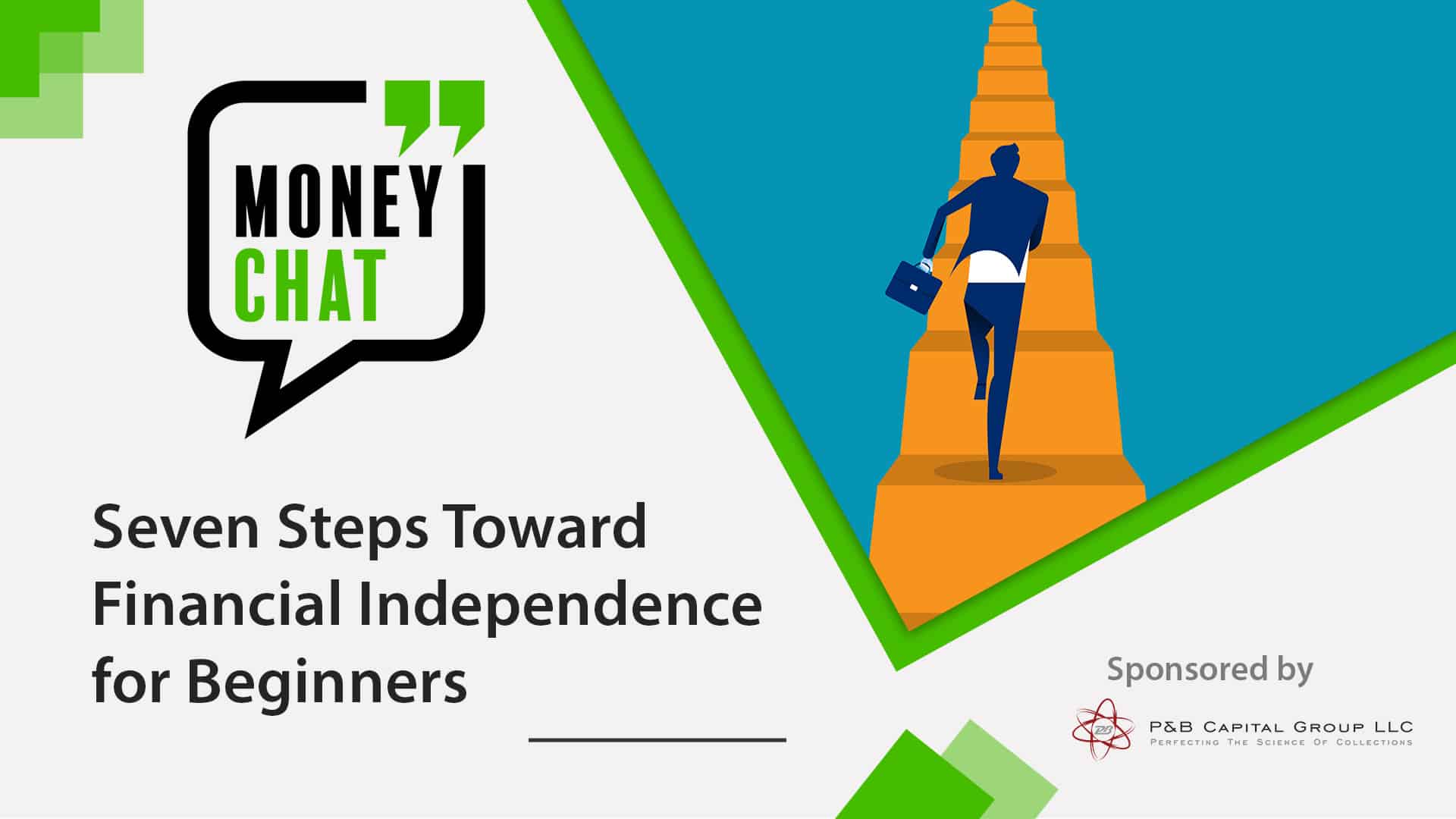
Seven Steps Toward Financial Independence for Beginners
If you’re “flying solo” financially for the first time, you might feel a little lost or overwhelmed. However, you shouldn’t feel isolated by that feeling, as the Pew Research Center found that just 24% of U.S. adults are fully financially independent by 22. Financial independence and wellness does not come easily. Following these listed tips and tricks is not the be-all-end-all of financial literacy, but it can set you on the right path.
Our goal in this Money Chat is to help provide a list of first steps any beginner should take as they work toward financial independence.
Step 1) Budgeting
Budgeting is perhaps the most important first step one can take in their financial journey. Understanding exactly how much money is coming in versus how much you are spending each month can help you plan, allocate, and reorganize your finances for the future. With dozens of online resources detailing how best to create a budget, understanding your financial standing before tackling unpaid loans, saving goals, or even investments can help you develop safer financial habits.
A detailed budget that tracks expenses, income after taxes, and other key payments can also help you begin paying down unpaid loans. Debt is stressful for anyone, and working toward resolving unpaid accounts without an understanding of how much you can spend each month can be dangerous. Once a budget is established, building your financial education can begin and the path toward financial independence opens up.
Step 2) Control Your Impulses
Having a working budget does not mean that you should be spending your budget each month. A working budget is meant to guide you toward knowing when to rein in your spending. While you can plan more detailed and budget-friendly getaways, expenditures, and more with a budget, it is best to pay down overdue loans, credit cards, and other accounts growing with interest rates.
Making small adjustments in what you buy by distinguishing between the things you need and the things you want is a financially helpful habit to put into practice. Credit cards and credit card debt—which amounts to $856 billion for U.S. citizens—is one of the largest traps consumers can fall into. It is typically recommended that all credit card balances be paid in full at the end of each month. If you cannot do that, it’s time to rein in your spending.
Step 3) Live Within Your Means
Living within your means is an important step toward financial independence. After making a budget, understanding when to rein in spending, the next step is to understand your financial lifestyle.
A common guideline is the 50/30/20 rule—50% of your budget should be dedicated to needs, 30% to wants, and 20% to savings. As you work toward account resolution, those percentages may and should change depending on how you are paying off debts or paying for higher education, but the principle remains the same. While inching toward financial independence, understanding where the line is drawn between needs and wants is vital. If you are spending too much to live in a nicer apartment or home, perhaps it’s time to consider cheaper means of housing. If you’re spending too much on food, consider frugal but nutritional meal habits.
A very helpful phrase when deciding how to live within your means is: “Just because you can pay for it, does not mean you can afford it.” While a new TV, new car, or a new home may seem like lifestyle upgrades that satisfy immediate needs, long-term financial wellness and independence should not be sacrificed.
Step 4) Savings and Retirement
Once your budget is under control and healthy financial habits are formed, it is time to start saving and planning for the future. Consider the 50/30/20 rule. Under that guideline, 20% of each paycheck, after taxes, should be saved whether it’s toward a saving plan, retirement, investments, or even an emergency fund. However, allocating 20% of your paycheck may not be feasible as you begin your financial independence planning. Consider allocating that 20% instead toward paying down unpaid loans and credit cards to ensure that interest rates do not climb higher than you are currently paying them off.
Retirement accounts, however, should be considered almost immediately. The U.S. government found that only half of Americans have begun planning for retirement. To ensure a healthier lifestyle as you get older, having an active retirement plan is vital to staying ahead of the game. The common understanding is if you invest $10,000 at 25 years old into a standard retirement plan, you will be left with $1 million by your retirement age. Begin researching how retirement plans work and understand how much you can afford to allocate toward it each month.
Step 5) Emergency Funds
An infamous Bankrate study found that just 49% of Americans have emergency funds to last three months or more, which includes 25% of those who responded indicating that they have no emergency funds whatsoever. When planning to become financially independent, it’s important to have set aside monies dedicated to an emergency. Accidents happen, and going bankrupt because of those accidents may be avoidable.
While planning for your retirement and other savings, it’s important to consider setting aside a small percentage each month dedicated to a fully-accessible savings account that can be accessed in case of an emergency. Throughout the COVID-19 pandemic, as unemployment rates hit 14.8%, having an emergency fund to rely on became a focal point of financial wellness. If you were to come into an inheritance or a large amount of cash, consider setting it aside for a “rainy day.”
Step 6) Investments
Much like a fully functioning retirement account, setting aside some of your savings budget to be put into the stock market or other long-term investments is typically more beneficial than letting it sit in a low-earning savings account. On average, money placed into a standard S&P 500 Index Fund will grow 7% year over year, while money in a standard savings account will grow by just 0.06%.
If you are ready to tackle this step after considering the previous five, it is worth considering hiring a financial advisor to go over your finances and set up a professional, detailed budget, financial plan, and investment portfolio for the future.
Step 7) Never Stop Learning
If you are comfortable with your budget and financial plan, it isn’t the time to get complacent. Keep learning, explore free government resources, and expand your financial literacy. Catch up on Receivable Info’s Money Chat series for additional financial education pieces. Visit MyMoney.gov to learn more about key financial wellness principles from the Financial Literacy and Education Commission.
These seven steps are meant to be a springboard as you work towards financial independence. Every step takes work, but once each step is completed, financial independence could be within reach.
Additional Resources
If you want to learn more about financial literacy or your rights as a consumer, please visit the Receivables Info Resources Page.
Have an idea for a Money Chat topic?
We want to hear from you! If you have a suggestion for a future Money Chat topic, please email us at [email protected].
The information contained in this article is meant to serve as general guidance for consumers and not meant to serve as comprehensive financial advice. For questions about your individual circumstance, finances, or accounts, please contact your creditor(s) and/or financial advisor directly.
Thank You To Our Sponsor P&B Capital Group
P&B Capital Group, LLC is a nationally licensed, third-party collection agency that services non-performing accounts receivable and loan portfolios with compliance, transparency, and respect. We help consumers understand and resolve their financial obligations while providing improved cash flow for our creditor clients. P&B Capital Group is headquartered in West Seneca, NY.







